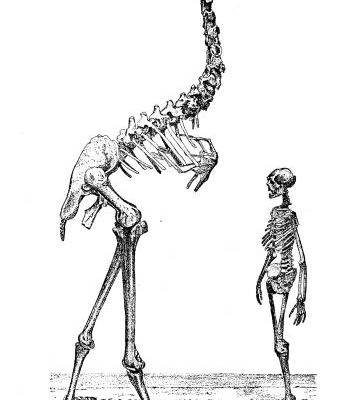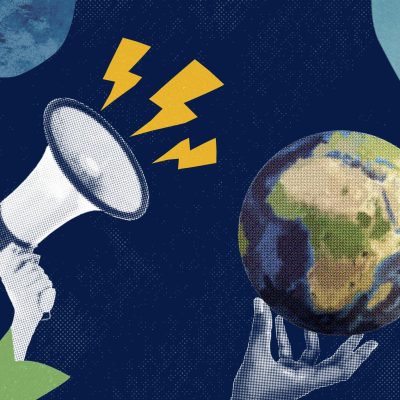The untold toxic side of the body positivity movement: skinny shaming
Fatphobia, the judgment of someone’s characteristics solely based on their weight or appearance, has been a recurring theme throughout history, starting when flappers brought about a complete aesthetic change during the roaring 20s that caused the boyish figure to come into fashion. Then, in the late 1960s, due to models like Twiggy, thin was back in. This trend continued into the 80s where the supermodel era began with models such as Kate Moss and Janice Dickinson. Women’s style standards were refashioned to be tall, thin and athletic, according to Amber Petty from The List.
However, a radical change occurred in the form of body positivity. The body positivity movement was created to celebrate women of all shapes and sizes in society, but mainly to present women with curvy bodies who have been body-shamed by the media and beauty standards in a more positive and loving light.
I admire the body positivity movement greatly, however, certain people in this movement have gone unopposed and grown into quite a toxic community – specifically, the ones that want to put curvier women into the spotlight by putting down thinner women. In the early 2000s the body positivity movement was taken almost as a “joke,” according to columnists such as Maria Fischer from Revelist, who added, in fact, it didn’t even really exist. It was hard to speak up and make an impact, but around early 2020, the body positivity movement blew up thanks to musical artists like Lizzo with “Truth Hurts” and Megan the Stallion with “Hot Girl Summer.” These artists portrayed more voluptuous and curvy women as independent, strong and sexy all in one person. This led to the era of “hot girl summer,” where women would take back the power from “sexist men” by expressing themselves in any way they wanted to despite what society thought of them. These women began to wear clothing that they were afraid to wear before because they were afraid to get slut-shamed or catcalled. They changed their mannerisms into whatever they wanted, not just something dainty and feminine, and they posted on social media with their bodies unedited and bare faces without makeup.
This period is something schools should consider teaching in the future. Recently I’ve been in awe of the self-confidence being expressed by ladies everywhere and their increased self-love. I was having a lovely time celebrating this movement until I began to notice that the same communities that brought up curvier women were also bringing down skinnier women in the process. I first noticed this at my school. During lunch, a kid from my homeroom approached me and grabbed my hand, while commenting, “Oh, your wrists are so small in comparison to mine.” What bothered me wasn’t the fact that he had touched me, but rather the ridicule I received from his comment. The class burst into laughter at something I thought was healthy – being in shape. I was positive he would have stopped after getting a good laugh, but his criticism continued.“Do you eat?” he asked. Of course, I eat. Just because I am skinny doesn’t mean that I don’t eat! This was one of the numerous times this had occurred to me. Another time I had a person shove a burger in my face, claiming that I lived an unhealthy lifestyle. When I called them out for their behavior, they brushed it off as a joke. It was done in jest, however, it was not a joke that I found pleasant in the slightest.
Although we’re growing increasingly aware of fat shaming, skinny shaming (the securitization of people for their thin appearance) is now beginning to rise, which is leading to ignorance and insensitive comments. One thing I’ve learned from Melina Cemanovic’s articles at Ezine is that although most people know that being overweight can lead to health issues such as heart failure and diabetes, a lot of people don’t know that being underweight can also lead to heart attacks and other chronic illnesses. This is peculiar considering most of my friends know what it means to be anorexic but not about the side effects or even how to help a person who is suffering from an eating disorder. In the movie “To the Bone,” the main character, Ellen, is anorexic and her family is trying to help her recover but they just don’t know how, which is shown throughout the movie. Every time they plan on helping Ellen, they end up making her situation worse. In one scene, Ellen’s mom gives her a cake the day she comes home from { find out where she’s been} in the shape of a hamburger that says “Eat up, Ellen.” If you aren’t sure why this is insensitive, let me explain. Ellen had just arrived home and not even 24 hours in she was already being pressured to eat. Having an eating disorder takes a toll on your mental health. Her parents are aware of this, the hardships she goes through, and still decide to greet her with another reminder that she needs “fixing.” In the movie, Ellen refers to herself multiple times as feeling “broken” inside. Despite not having an eating disorder, I could relate to having felt pressured to eat, which is why watching this scene all I could think about was the time I had a hamburger shoved in my face.
Some people believe that skinny shaming isn’t a thing because being skinny is the beauty standard, and those skinny people also have skinny privilege so they will never have to face the harshness of the world. Yet time and time again it has been proven that is not the case. I do agree that thinner people won’t see the world the same way a bigger person would, yet disagree that they won’t face the harshness of the world. Lili Reinhart, who plays Betty Cooper on “Riverdale,” is a major celebrity who discussed her struggles with self-love and body positivity at the Glamour 2018 Women of the Year summit. Lili said that in the past people have told her that “she didn’t have the right to be self-conscious about her body because she was skinny.” This led her down a dark path. She became uncomfortable in her skin and had a hard time talking to most people. She suffered in silence because she believed it would be selfish of her to complain since she was skinny.
Having trouble accepting yourself and loving yourself is something that anyone could face since as Lili said “we aren’t born with these insecurities, we’re told to be insecure.” Society has imposed insane beauty standards on all of us and expects everyone to change to fit them, when in reality, we are all “imperfectly beautiful” as Lily said.
Women are told to have curves and still be delicate, while men are forced to be muscular and somehow have a chiseled face that is not genetically guaranteed.
In fact, according to Stef Orzech, writing for “Human Parts,” it’s been shown that the percentage of men with eating disorders has risen by two thirds over the past decade, and keep in mind that these are only the men who admitted to having an eating disorder. Stef points out that even boys as young as 10 years old have reported worrying about their lack of muscularity. This is dangerous since these boys aren’t talking about their anxiety. This stress causes most boys to rush to get muscles, by doing things like steroids, which can lead to long-term health risks both physically and mentally.
Skinny people have been in the spotlight for a long time, in many eras, so I do think that it’s good that curvier people are finally getting their long-overdue time in the spotlight. However, putting down another person to build up someone is never okay because we all have feelings and insecurities. What we should do is make sure we aren’t being insensitive by simply being aware of what we are saying to other people and maybe even do a check-in with your friends; you never know when someone needs a hug. What we should do is be sure that we are making everyone feel happy and included. If you don’t have anything nice to say about someone, that’s fine, just don’t say anything at all. Let’s celebrate all bodies of all shapes and sizes for men and women!
In conclusion, the hard truth is that putting down another person to try to build up someone else just results in a vicious cycle. While, yes, we are getting more awareness now, what’s to say that in 10 to 20 years we won’t just be more aware of skinny people again, and put bigger people down. Instead of uplifting one person, we need to just be kind and look at people beyond what’s on the outside. See them for who they are, not what they look like. Everyone feels insecure, don’t play into that, be the reason they get over it.










